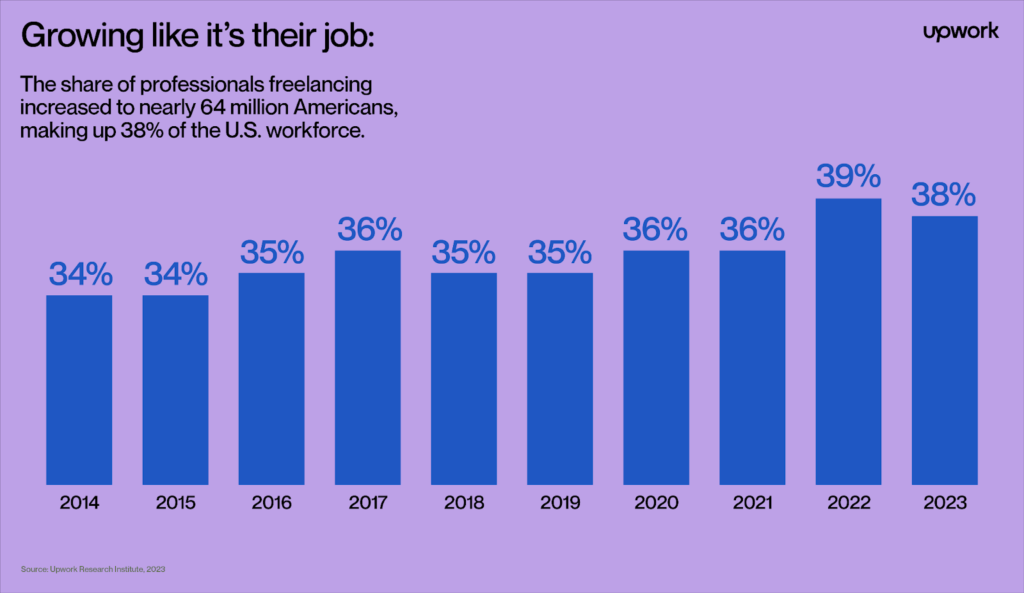The American workplace is changing fast. freelance More and more workers are leaving traditional 9-to-5 jobs to embrace freelance remote work. This shift isn’t just a trend—it’s becoming a lifestyle choice for millions. From graphic designers to software developers, Americans are choosing the flexibility, independence, and freedom that come with freelancing from home or anywhere in the world. But what’s driving this movement, and what does it mean for the future of work? Let’s dive into the rising trend of American workers choosing freelance remote jobs.

Why Freelance Remote Work Is Booming
The rise of freelance remote work didn’t happen overnight. Several factors have fueled this growing trend. First, technology has made it easier than ever to work from anywhere. High-speed internet, video conferencing tools like Zoom, and project management platforms like Trello or Asana allow freelancers to collaborate with clients across the globe without stepping into an office.
Second, the pandemic played a huge role. When COVID-19 hit in 2020, millions of Americans were forced to work from home. For many, this was a wake-up call. They realized they could do their jobs just as well—if not better—without the daily commute or office distractions. Even as offices reopened, a large number of workers didn’t want to go back. According to a 2024 Upwork study, nearly 40% of U.S. workers performed some freelance work in 2023, with many choosing remote roles over traditional employment.
Third, people are prioritizing work-life balance. Freelancing offers the chance to set your own hours, pick your projects, and spend more time with family or hobbies. For parents, students, or those with side hustles, this flexibility is a game-changer. Instead of being tied to a desk from 9 to 5, freelancers can design a schedule that fits their lives.
Who’s Joining the Freelance Revolution?
Freelance remote work isn’t just for tech experts or creative types. Workers from all industries are jumping in. Writers, marketers, virtual assistants, accountants, and even teachers are finding freelance opportunities online. Platforms like Upwork, Fiverr, and LinkedIn have made it easier for professionals to connect with clients and build their own businesses.
Younger generations, like Millennials and Gen Z, are leading the charge. They value experiences and flexibility over the stability of a traditional job. A 2023 survey by Freelancer.com found that 60% of Gen Z workers have considered freelancing as a full-time career. But it’s not just young people—older workers are also embracing freelancing. Many Baby Boomers and Gen Xers are using their decades of experience to offer consulting services or take on part-time remote gigs after retiring from full-time roles.

The Benefits of Freelance Remote Work
So, why are so many Americans drawn to this way of working? Here are some of the top reasons:
- Freedom and Flexibility: Freelancers can choose when, where, and how they work. Want to take a midday yoga class or work from a coffee shop? With freelancing, you’re the boss.
- More Earning Potential: While freelancing doesn’t always guarantee a steady paycheck, skilled workers can often earn more than they would in a traditional job. By setting their own rates and taking on multiple clients, freelancers can boost their income.
- Diverse Opportunities: Freelancers aren’t limited to one role or company. They can work on a variety of projects, from designing a website for a startup to writing blog posts for a travel company. This variety keeps work exciting and helps build new skills.
- No Commute, More Savings: Remote work eliminates the time and cost of commuting. For many, this means more money in their pockets and extra hours inentirely possible to save on gas, car maintenance, or public transit fares.
- Personal Growth: Freelancing pushes workers to step out of their comfort zones, market their skills, and manage their own businesses. This builds confidence and entrepreneurial skills that last a lifetime.
Challenges of Freelance Remote Work
Of course, freelancing isn’t all smooth sailing. It comes with its own set of challenges. For one, income can be unpredictable, especially when starting out. Freelancers need to be disciplined about budgeting and saving for lean months. Finding clients can also be tough, particularly in competitive fields like writing or graphic design. Building a strong portfolio and getting positive reviews on platforms like Upwork can take time.
Another challenge is the lack of benefits. Unlike traditional jobs, freelancing rarely comes with health insurance, paid vacation, or retirement plans. Freelancers need to plan for these expenses themselves, which can be daunting. Additionally, working from home can sometimes feel isolating. Without coworkers or a structured office environment, some freelancers struggle with loneliness or staying motivated.
What This Means for the Future
The rise of freelance remote work is reshaping the American economy. Companies are adapting by hiring more freelancers to save on office space and long-term contracts. At the same time, workers are gaining more control over their careers. This shift could lead to a more flexible, creative, and entrepreneurial workforce.
However, it also raises questions. Will traditional offices become a thing of the past? How will companies maintain team culture without in-person interactions? And what policies might the government introduce to support freelancers, such as better access to healthcare or tax breaks? These are issues policymakers, businesses, and workers will need to address in the coming years.

Tips for Getting Started as a Freelancer
If you’re thinking about joining the freelance remote work trend, here are some tips to set yourself up for success:
- Build a Strong Profile: Create a professional profile on platforms like Upwork or Fiverr. Highlight your skills, experience, and past projects. A polished profile attracts more clients.
- Start Small: Take on smaller projects to build your reputation. As you gain experience and reviews, you can charge higher rates.
- Network: Connect with other freelancers or potential clients through LinkedIn, industry forums, or local meetups. Word-of-mouth referrals can lead to big opportunities.
- Stay Organized: Use tools like Google Calendar or Trello to manage deadlines and projects. Staying on top of your tasks builds trust with clients.
- Keep Learning: Take online courses or watch tutorials to stay competitive. Platforms like Coursera or YouTube offer free or low-cost ways to learn new skills.
The Bottom Line
The rise of freelance remote work is more than a passing fad—it’s a movement that’s changing how Americans work and live. With the promise of flexibility, independence, and unlimited earning potential, it’s no wonder so many are making the switch. While freelancing comes with challenges, the rewards can be life-changing for those willing to put in the effort.
As technology advances and workers continue to prioritize freedom over tradition, freelance remote jobs will likely keep growing. Whether you’re a seasoned professional or just starting out, now’s the perfect time to explore this exciting new world of work. Who knows? Your next big opportunity could be just a click away.
Must know :- Celebrities Who Secretly Got Married in 2025 Without Media Coverage






